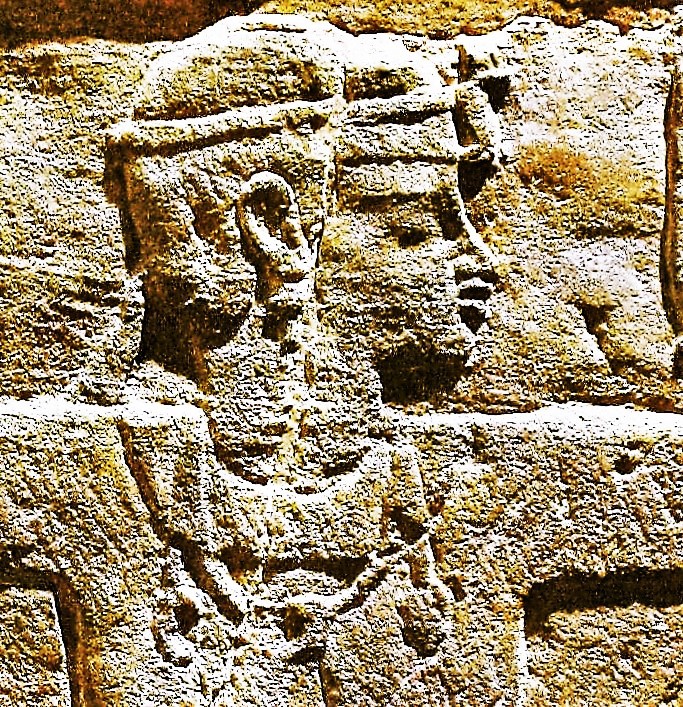
The reign of Arrakkamani (c. 280 BCE) when the royal burial ground was transferred to Meroë from Napata (Jebel Barkal). In the fifth century BCE, Greek historian Herodotus described Meroë as “the mother city of the other Ethiopians”.
Their connection to many major river systems such as the Niger River, West Africa.
The city of Meroë was located along the middle Nile which is of much importance due to the annual flooding of the Nile river valley and the connection to many major river systems such as the Niger which aided with the production of pottery and iron characteristic to the Meroitic kingdom that allowed for the rise in power of its people.
Rome’s conquest of Egypt led to border skirmishes and incursions by Meroë beyond the Roman borders.
In 23 BCE the Roman governor of Egypt, Publius Petronius, to end the Meroitic raids, invaded Nubia in response to a Nubian attack on southern Egypt, pillaging the north of the region and sacking Napata (22 BCE) before returning home. In retaliation, the Nubians crossed the lower border of Egypt and looted many statues (among other things) from the Egyptian towns near the first cataract of the Nile at Aswan. Roman forces later reclaimed many of the statues intact, and others were returned following the peace treaty signed in 22 BCE between Rome and Meroë. One looted head though, from a statue of the emperor Augustus, was buried under the steps of a temple. It is now kept in the British Museum.
Researchers excavating a region in Sudan have uncovered the ruins of 16 such pyramids on what would have been the site of an ancient cemetery. The 2,000-year-old structures have tombs underneath, one of which revealed an offering table dedicated to the god of the underworld, Osiris.
The Nile River
The Nile River is an international river that flows through 11 countries that include Rwanda, Burundi, Tanzania, Uganda, Democratic Republic of Congo, Kenya, Ethiopia, Eritrea, South Sudan, Sudan and Egypt.
The Nile has two major tributaries, the White Nile and Blue Nile. The White Nile is considered to be the headwaters and primary stream of the Nile itself. The Blue Nile, however, is the source of most of the water and silt. The White Nile is longer and rises in the Great Lakes region of central Africa, with the most distant source still undetermined but located in either Rwanda or Burundi. It flows north through Tanzania, Lake Victoria, Uganda and South Sudan. The Blue Nile begins at Lake Tana in Ethiopia and flows into Sudan from the southeast. The two rivers meet just north of the Sudanese capital of Khartoum.
The northern section of the river flows north almost entirely through the Sudanese desert to Egypt, then ends in a large delta and empties into the Mediterranean Sea. Egyptian civilization and Sudanese kingdoms have depended on the river since ancient times. Most of the population and cities of Egypt lie along those parts of the Nile valley north of Aswan, and nearly all the cultural and historical sites of Ancient Egypt are found along riverbanks.
The next recorded contact between Rome and Meroë was in the autumn of 61 CE. The Emperor Nero sent a party of Praetorian soldiers under the command of a tribune and two centurions into this country, who reached the city of Meroë where they were given an escort, then proceeded up the White Nile until they encountered the swamps of the Sudan. This marked the limit of Roman penetration into Africa.
The period following Petronius’ punitive expedition is marked by abundant trade finds at sites in Meroë. L.P. Kirwan provides a short list of finds from archaeological sites in that country. However, the kingdom of Meroë began to fade as a power by the 1st or 2nd century CE, sapped by the war with Roman Egypt and the decline of its traditional industries.
Africa, The Spread Of Civilization In Africa – World History International
Meroë in Hebrew legend
Hebrew oral tradition avers that Moses, in his younger years, had led an Egyptian military expedition into Sudan (Kush), as far as the city of Meroë, which was then called Saba. The city was built near the confluence of two great rivers and was encircled by a formidable wall, and governed by a renegade king. To ensure the safety of his men who traversed that desert country, Moses had invented a stratagem whereby the Egyptian army would carry along with them baskets of sedge, each containing an ibis, only to be released when they approached the enemy’s country. The purpose of the birds was to kill the deadly serpents that lay all about that country.Having successfully laid siege to the city, the city was eventually subdued by betrayal of the king’s daughter, who had agreed to deliver the city unto Moses on condition that he would consummate a marriage with her, under the solemn assurance of an oath.